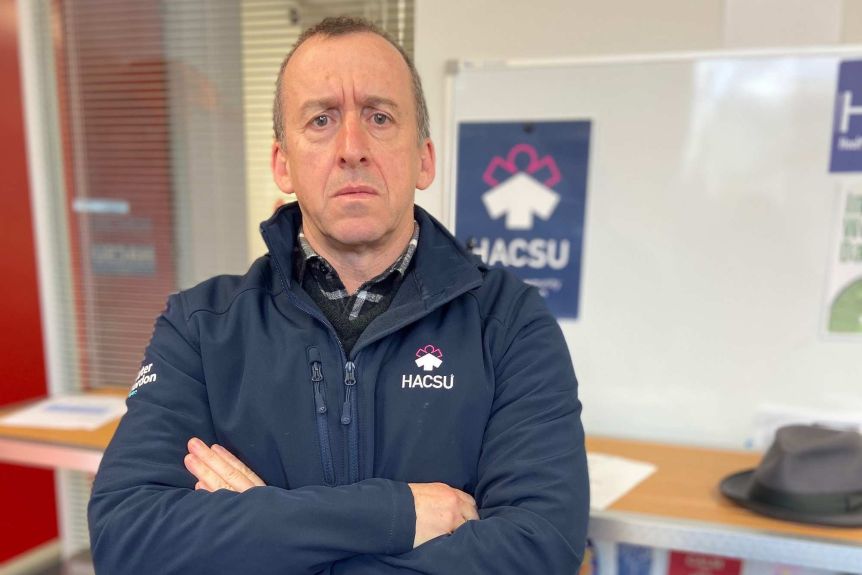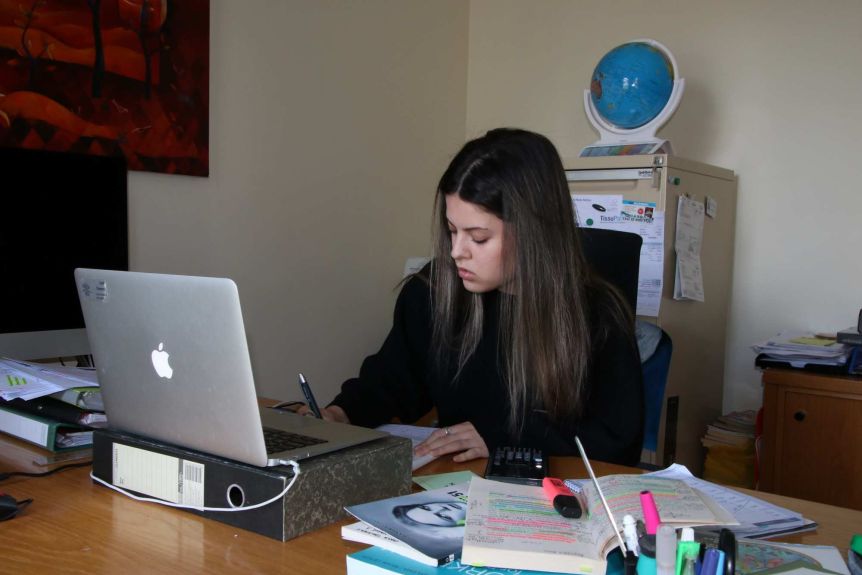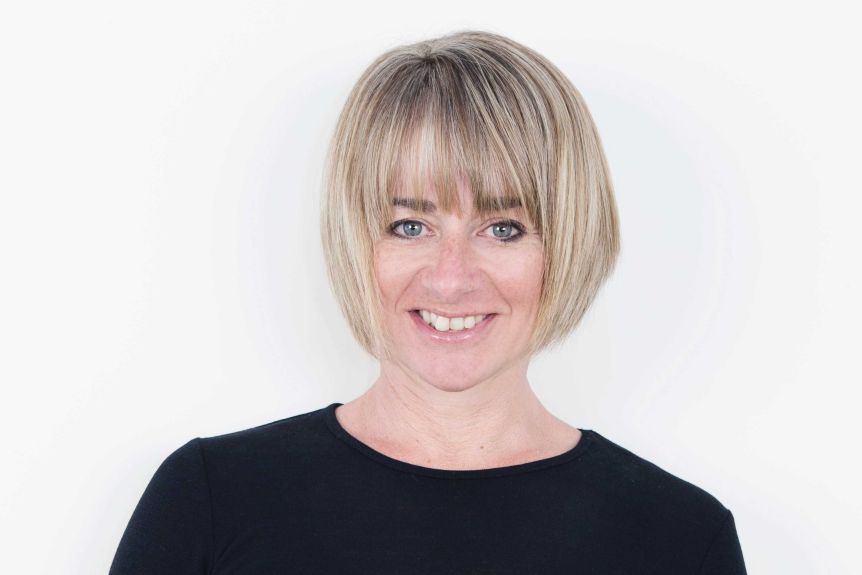
The rate of children ending up in Victorian emergency rooms after self-harming has jumped by a third since this time last year, according to government data seen by the ABC.
Key points:
- A nurse says hospitals need more mental health staff to deal with the an increase in self-harm during the pandemic
- An expert says not all instances of self-harm are taken seriously
- The State Government is giving an extra $28.5 million to schools to support mental health
Department of Health and Human Services (DHHS) data shows Victoria has recorded a 33 per cent rise in children presenting to hospital with self-harm injuries over the past six weeks, compared to a year earlier.
The total number of self-harm presentations to emergency departments across all ages increased by 9.3 per cent.
The figures are from a mental health briefing held by the DHHS earlier this week.
Statistics from Lifeline also show people across the country are struggling with their mental health. The hotline received 25 per cent more calls than this time last year, the equivalent of one call every 30 seconds.
Mental health nurse Kim, who did not want her last name used, works in a Melbourne emergency department and said she had witnessed a large number of first-time presentations of self-harm.
“It’s people we have never seen before who might have anxiety or depression and would usually manage their mental health by going to the gym, seeing friends, keeping themselves busy,” Kim said.
Kim said one of the most concerning trends was “a really big increase in kids” being admitted to emergency.
“I saw a young man under 18 who was going through the death of a friend who had [died by] suicide,” she said.
Kim has worked in the mental health industry for 11 years and said, until recently, she had always been able to cope with the pressure.
“There’s an overwhelming sense of sadness to it all, there isn’t anywhere for these people to turn to,” she said.
Government promises cash for schools, but union wants nurses
The State Government yesterday announced $28.5 million extra funding to go towards supporting mental health in schools.
But the Health and Community Services Union also wants more staff specialising in mental health to be provided to emergency rooms.
It says the gap in mental health services available during lockdown means some people in crisis can only find the help they need in emergency rooms.
Kim agrees.
“People don’t have anywhere else to go anymore,” she said.
“They can’t walk into their GP. The one place they can still walk in and get help is the emergency department.”

The union’s state secretary, Paul Healey, said the “steep increase in emergency presentations” had led to union members reporting they were under “extreme pressure”.
“These are workers that do what they do because they care deeply about the people they treat. They’ll absorb a lot of the increased workload pressures themselves which leads to vicarious trauma, worse outcomes for consumers and a strain on families and carers,” Mr Healey said.
Health expert stresses importance of checking in with young people

Year 12 student Carla Tomaras said a rise in mental health issues among young people was not surprising.
The 18-year-old said while the first round of learning under stage 3 restrictions “started off pretty easy”, stage 4 had made it tough to stay positive.
“I had a good mindset about it and I was motivated but towards the end, I really found it difficult. I found it hard to push myself to do the work I would be able to do at school easily,” she said.
“Getting back to school was one of the best parts of this year, it was so much more engaging and I was so ready to be back with everyone.”
Ms Tomaras said everyone was happier to be back and having it pulled away again when stage 4 restrictions were announced was “really difficult”.
But she said she felt no shame is fronting up to struggles she was having with her mental health.
“There’s so much anticipation, no one knows what’s going to happen after this stage or later on. That fear of not knowing makes it really hard to stay positive.”

Jo Robinson, the head of suicide prevention research at youth mental health organisation Orygen, said the uncertainty of the future and a lack of routine were key reasons for a decline in young people’s mental health.
“Some of those normal coping strategies like seeing friends and being social aren’t available to them. They are finding themselves unable to use those self-help strategies and are ending up at crisis,” she said.
Stigma and taboo surrounding suicide and self-harm were also barriers to helping people, Professor Robinson said, and meant families and even some healthcare professional were not taking self-harm as seriously as they should.
“Some young people are told their injuries weren’t serious enough to warrant treatment, or they are dismissed as attention-seeking,” she said.

Professor Robinson said the most important thing adults could do to help was talk to young people.
“I know there’s a lot of taboo about talking about suicide to young people because there are fears it will put ideas into people’s head. That’s not true. Research has disproved that,” she said.
“It’s completely OK if you do so carefully. Do take these things seriously, check-in with them.
“Services are challenged at the moment but there are some really good resources and support out there.”